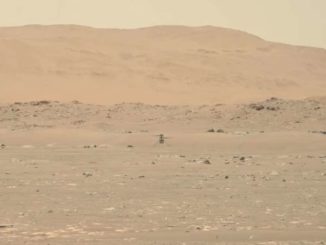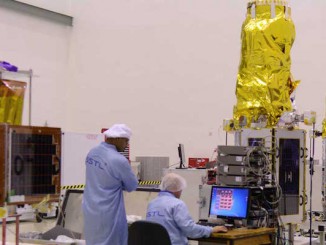EDITOR’S NOTE: The Delta 2 rocket launched for the final time at 6:02 a.m. PDT (9:02 a.m. EDT; 1302 GMT) Saturday.
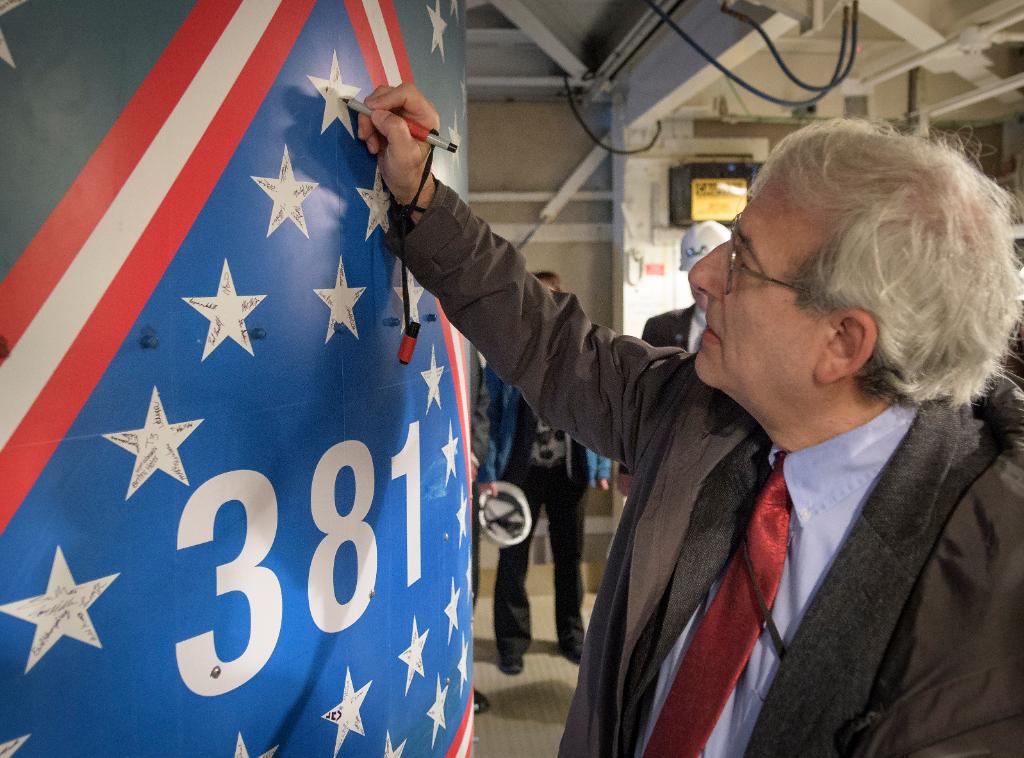
When the first Delta 2 rocket took off on Valentine’s Day 1989, ideas like navigating by smartphone and driving robots on Mars were science fiction. More than 150 launches over the last 30 years helped change all that.
The Delta 2 era is set to close Saturday with the launch of NASA’s ICESat 2 Earth-observing satellite from Vandenberg Air Force Base, California, ending a program that was conceived in the Cold War and traces its technological lineage to the dawn of the Space Age.
Liftoff is scheduled for 5:46 a.m. PDT (8:46 a.m. EDT; 1246 GMT) Saturday, and the launch window extends until 8:20 a.m. PDT (11:20 a.m. EDT; 1520 GMT).
Hundreds of Delta team members and retirees from United Launch Alliance, NASA and other companies involved in the rocket’s storied history gathered Thursday evening for a feast of Santa Maria style tri-tip barbecue, reuniting a group that has helped launch many of the Delta 2 flights since 1989.
Many engineers in recent weeks have counted up how many Delta 2 missions they’ve worked on. Many of the senior managers now at ULA and NASA’s Launch Services Program, which oversees the agency’s robotic satellite launches, can trace their Delta 2 careers back to the 1980s and 1990s.
Chuck Dovale, deputy manager of the Launch Services Program, says the Delta 177 mission in 1984 was one of his first missions at Hangar AE, home to the mission director’s center at Cape Canaveral. That predates the Delta 2 program, which continued the tradition of number flights sequentially.
“That was back back when (NASA) still owned the launch pads,” Dovale said. “So it didn’t necessarily have to be a NASA satellite flying. We still owned the rockets and the launch pad. We launched for the Navy. We launched many of the commercial missions. One of my first ones was NATO 3D — Delta 177.
“Unfortunately, shortly after that, there was a GOES (weather satellite) on a Delta in May of ’86 that failed,” Dovale said. “That was a bad year for launches. I probably never learned more in a shorter period of time than after that failure.”
The loss of a GOES weather satellite in May 1986 came less than four months after the Challenger accident, which grounded the space shuttle fleet just as the U.S. government began shifting more military launches to the NASA space plane. In the aftermath of the Challenger accident, the Air Force funded development of an upgraded version of the Delta rocket, which became the Delta 2, to ensure military satellites like GPS navigation craft had a ride into space.
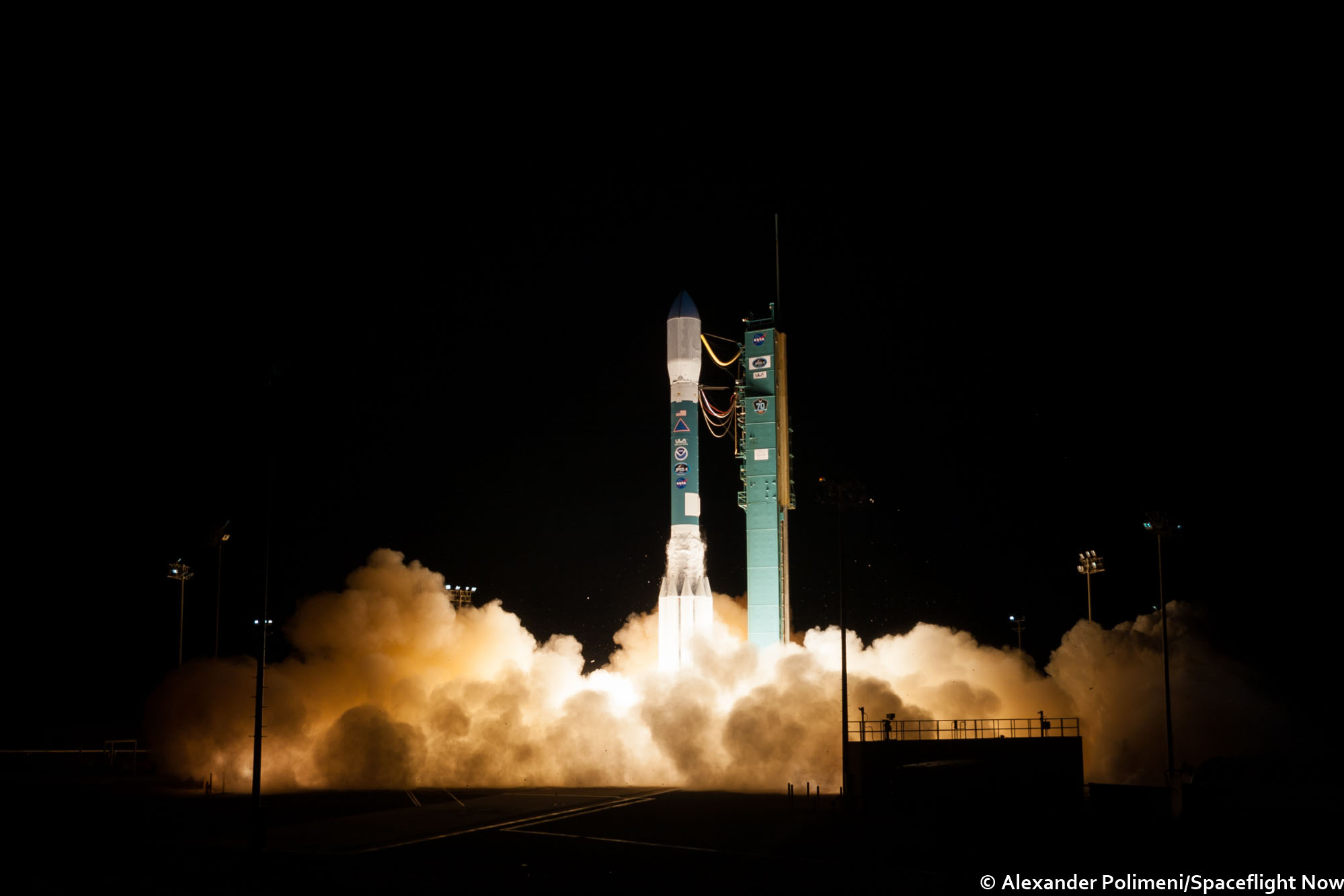
Dovale later became a NASA launch director, managing numerous Delta 2 flights carrying the agency’s science probes before moving into a leadership role at the Launch Services Program.
Tim Dunn will serve as NASA’s launch director for Saturday’s mission, 22 years after joining the Delta 2 program with Boeing, which merged its launcher division with Lockheed Martin’s in 2006 to form ULA. The builders of the Delta rocket family changed names through multiple corporate mergers and acquisitions, beginning with the Douglas Aircraft Company, then succeeded by McDonnell Douglas and Boeing before ULA.
The first launch of a Delta rocket occurred in May 1960, debuting a derivative of the Thor intermediate range ballistic missile capable of putting a satellite into orbit. Engineers have lengthened the Thor’s original 8-foot-diameter (2.4-meter) first stage several times, expanding the Delta’s propellant capacity, while adding a new upper stage engine and strap-on solid rocket boosters to haul heavier payloads into space.
The Delta rocket line has been on the brink of retirement several times, perhaps most notably in the 1980s, when the U.S. government sought to transition all of its satellite launches to the space shuttle. That policy changed in the aftermath of the Challenger accident in 1986, resulting in the creation of the Delta 2 and the restart of the Delta production line.
“Delta has such a rich history, starting back in 1960,” Dunn told Spaceflight Now. “If you talk to real gray-beards on the program, it was on death’s door step probably at least three, maybe four times, when everyone thought for sure that was the last launch ever, and they were all out of jobs, and somehow it kept getting new life.
“For this version of Delta, we are certain that this one will not fly after ICESat 2,” he said.
After stints as an Air Force as a GPS satellite analysis officer and a Titan 4 launch controller, Dunn joined the Delta 2 program supporting dozens of missions as a launch-day guidance engineer. One of his first missions on the Delta 2 rocket was the launch of Mars Pathfinder in December 1996, which delivered NASA’s first rover to the red planet.
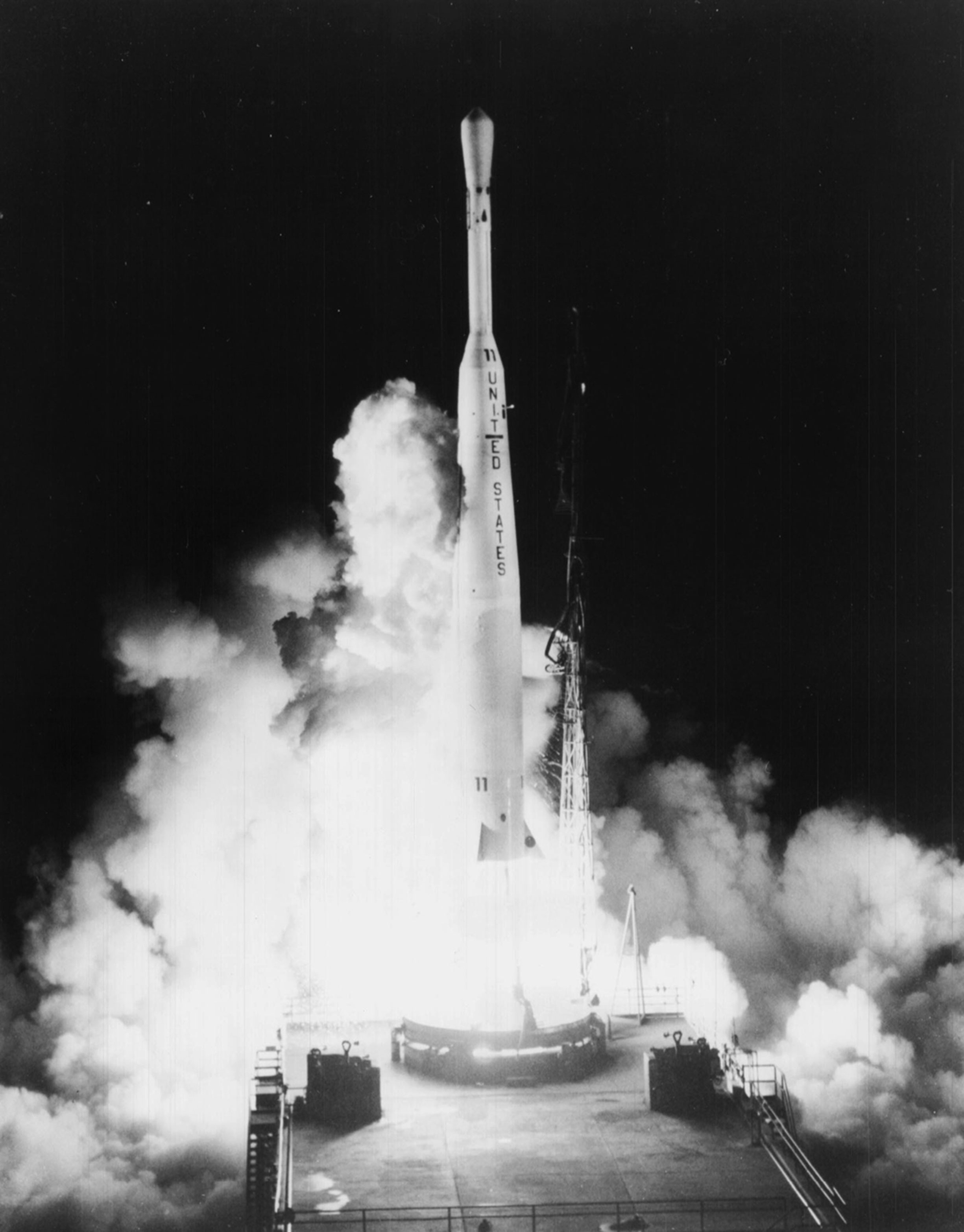
“One of our first missions was the Mars Pathfinder mission,” Dunn said. “That was the very small rover that we sent to Mars back in the fall of ’96. That one was really satisfying to me because it was super-cool deep space mission with NASA, our customer at the time … We were sending something to crawl around on the surface of Mars.”
Hot Wheels produced a toy version of Mars Pathfinder’s Sojourner rover before the mission’s launch.
“My son was just a couple of years old, so it something I could relate to him with toys,” Dunn said. “So Pathfinder sticks out.”
Dunn joined NASA in 2000, rising in the ranks to be assigned his first mission as launch director in 2011, the final flight of a Delta 2 from Cape Canaveral.
“Just like Tim, I grew up with Delta 2,” Dovale said. “It’s always been a favorite of mine. It’s sad to see it go. It’ll be nice to see ICESat 2 successfully launched, but it’s going to be bittersweet.”
Some engineers go even further back with Delta, which has launched 380 times in its multiple variants.
One 82-year-old avionics advisor who participated in the launch readiness review Thursday worked his first Delta mission — Delta 33 — in 1965, Dunn said.
The more powerful Delta 4 rocket will continue flying for ULA, taking the Delta name into the 2020s, but it is also due for retirement in the early-to-mid-2020s.
The Delta 4 is a new design, incorporating different hydrogen-fueled engines, and wider propellant tanks than the Delta 2. Boeing, which ran the Delta program in the late 1990s, designed the Delta 3 rocket as a bridge between the older and new members of the Delta family, utilizing the Delta 2’s Thor-based first stage and the Delta 4’s new upper stage.
Delta 2s, which sometimes lifted off two or three times per month in the 1990s and 2000s, have been replaced by a fleet of bigger launchers. ULA moved on to focus on the Atlas 5 and Delta 4 boosters, and SpaceX’s Falcon 9 rocket now carries up many of the same types of payloads that were once tailored for the Delta 2.
Many commercial and military missions once served by satellites sized to fly on the medium-lift Delta 2 launcher are now accomplished by smaller spacecraft, taking advantage of the miniaturization trend in technology. At the opposite end of the mass spectrum, many commercial communications satellites outgrew the Delta 2’s capabilities in the 1990s and 2000s.
In its configuration with nine solid rocket boosters, a Delta 2 could put more than 6,600 pounds (3,000 kilograms) of payload to an orbit 517 miles (833 kilometers) above Earth.
Delta 2 rockets successfully launched 48 satellites for the U.S. Air Force’s Global Positioning System from 1989 through 2009, a two-decade span during which the satellite network became a part of the everyday lives of billions of people worldwide.
“Supporting the Air Force through all those years, that’s a special memory with GPS,” Dunn said. “From 1989 when GPS 2-1 first launched, as you progressed through the ’90s, that was the time when GPS went from this military system that only the military used, to essentially a common everyday person’s utility. That was really fun to be supporting and sustaining the constellation that everyone was beginning to use. Fast forward to 2018, and (when) you talk to younger kids today about GPS, they can’t imagine life without GPS, on your phone, on your watch, in your car.”
The GPS fleet consists of more than 30 satellites, and more than half of the GPS spacecraft currently in orbit were launched by Delta 2s. The network is vital for civilian navigation, from families on road trips, to hikers, to airliners landing in low visibility.
“Every single person who turns on their map on their telephone to get around, that GPS constellation is pretty amazing,” said Scott Messer, ULA’s Delta 2 program manager. “The constellation itself is super-amazing, but it’s certainly been a thrill from the Delta 2’s standpoint to launch that and be part of what enabled that.”
Messer’s first mission with the Delta 2 program was Delta 230.
“The Delta 2 vehicle has touched the life of probably every single person in America in the technoloy that it’s enabled over its 30 years,” Messer said. “It’s been a very, very prominent part of space history.”
Other Delta 2s dispatched NASA’s first three Mars rovers — Sojourner, Spirit and Opportunity — toward the red planet, along with the MESSENGER mission to orbit Mercury, the Dawn mission to the asteroid belt, the Spitzer Space Telescope, the planet-hunting Kepler observatory, weather satellites, and dozens of commercial and military communications spacecraft.
From Vandenberg, Delta 2 rockets hauled the bulk of Iridium’s first-generation fleet of voice and data relay satellites into low Earth orbit on 12 launches from 1997 through 2002. Those satellites are now being replaced by an upgraded Iridium fleet launching on SpaceX Falcon 9 rockets.
The Globalstar satellite network, also designed for mobile communications, was deployed by a series of Delta 2 rockets launched from Cape Canaveral.
Of the 154 Delta 2 missions launched to date, 44 have originated from Vandenberg, a spaceport situated on California’s Central Coast northwest of Los Angeles suited for launches into polar orbits, a perch preferred by many Earth-observing satellites.
“A number that’s even more exciting for me is when you consider the number of successful launches we’ve had on Delta 2, we’ve had 99 consecutive successful launches, and ICESat 2 will be No. 100,” Messer said.
The streak of successful missions dates back to 1997, when a Delta 2 rocket suffered one of the more memorable launch accidents of the last quarter-century, exploding 13 seconds after liftoff from Cape Canaveral.
The Delta 2 set to launch ICESat 2 will be propelled by a kerosene-burning first stage Aerojet Rocketdyne RS-27A main engine, four strap-on solid rocket boosters supplied by Northrop Grumman, and a restartable second stage AJ10-118K engine, also from Aerojet Rocketdyne The target for the ICESat 2 mission: A roughly circular polar orbit around 300 miles (500 kilometers) above Earth.
“The Delta 2 will go down in history as one of the world’s most successful launch vehicles, and we’re proud to be part of that legacy,” said Eileen Drake, Aerojet Rocketdyne’s CEO and president.
The RS-27A main engine, which generates 200,000 pounds of thrust at sea level, is a descendant of the H-1 engine used on the main stages of NASA’s Saturn 1 and Saturn 1B rockets, the predecessors of the Saturn 5 moon rocket in the Apollo program. In addition to a main thrust chamber, the RS-27A has two vernier engines for roll control during flight.
The second stage’s AJ-118K engine has its roots in the ballistic missile programs of the 1950s, according to Aerojet Rocketdyne. It burns a combination of Aerozine 50, a fuel cocktail made by mixing hydrazine and unsymmetrical dimethyl-hydrazine, and nitrogen tetroxide oxidizer to provide 9,850 pounds of thrust at altitude.
“This final Delta 2 launch will mark the 241st flight of the RS-27 and the 277th flight of the AJ10; all delivering 100 percent reliability to ensure mission success for our customers,” Drake said in a statement. “This outstanding track record represents the hard work and dedication of generations of Aerojet Rocketdyne employees over the decades.”
Elizabeth Jones, Aerojet Rocketdyne’s RS-27 and AJ10 program manager, said Friday that the Delta 2’s engines went through several upgrades over the decades, adding thrust and performance as the rocket’s size crew larger. Both types of engines will not fly again after Saturday’s mission, but a similar engine to the AJ10 will continue launching with NASA’s Orion crew capsule.
“We’ve been saying at some of our meetings, who’s going be the first one to crack? Is anybody going to tear up? It’s an emotional time, there’s a long legacy to be proud of,” Jones said.
“I’ll miss the work, I’ll miss the people,” said Latanjia Robinson, Aerojet Rocketdyne’s AJ10 chief engineer. “I’ll miss traveling to the launch sites to support the various tasks prior to launch, and the launches themselves. But it’ll be rewarding. I look forward to a successful mission.
“I’m getting emotional here thinking about it, but it’ll be kind of bittersweet to see the end of such a tremendous program that had such a big impact on our society as a whole,” Robinson said in an interview.
Robinson counts Delta 228 — a Delta 2 launch from Florida in 1995 with the Koreasat 1 communications satellite — as her first mission in the launch control center. She will be in the control again during Saturday’s countdown, tracking temperatures and pressures in the AJ10 engine before liftoff.
Jones said her first Delta 2 launch in the control center was Delta 305, a launch from Florida in 2004 with a GPS navigation payload.
The Delta 2 could fly with three, four or nine solid rocket motors built by Northrop Grumman Innovation Systems, formerly known as Orbital ATK. Over the history of the program, more than 1,000 of the solid motors have launched with Delta 2 rockets.
Email the author.
Follow Stephen Clark on Twitter: @StephenClark1.


